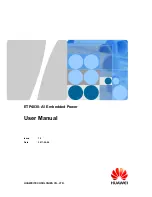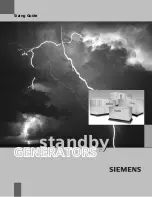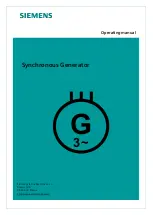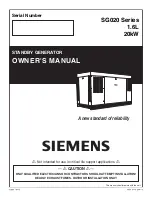
6
Putting into Service
The HydraPac is a High Pressure Hydraulic Pump delivering two different operating pressures for the two cycles of the tooling
operation. A high pressure for the installation cycle (or pull cycle) and a lower pressure for the ejection cycle (or return cycle). Each
HydraPac is provided with 10 m of trailing cable for connection of the electric power supply, a pair of Hydraulic Quick Couplers and an
electrical socket for the Control Cord Connection.
When connected to the correct power supply and then coupled hydraulically and electrically to an Installation Tool, the HydraPac will
start up on depressing the Trigger Switch on the Installation Tool. With the switch remaining depressed, the solenoid valve in the
HydraPac then becomes energised directing the Oil to the High Pressure Installation side of the Installation Tool.
Note: 1.
If the Trigger Switch is not released before the piston in the Installation Tool reaches the end of its stroke, the
Combination Valve will enter the idle mode thereby safely dumping all the Hydraulic Pressure into the tank. This
"Dumping" will also occur if any blockage occurs in the Hydraulic System.
2.
In the unlikely event of a total failure of the Primary Safety Hydraulic Pressure Relief Valve Mechanism, a second Safety
Relief Valve is located on the Pump Manifold.
On completion of the LockBolt installation cycle, the trigger switch is released, de-energising the Solenoid Valve which directs the
lower pressure oil flow to the return side of the Installation Tool. On completion of the return cycle the Combination Valve automatically
puts the HydraPac into "Idle Mode". The oil continues to flow through the Valve Assembly but returns directly to the tank at the idle
pressure of 1.3 mPa. On depressing the Tool Trigger Switch, the cycle is initiated.
If the Tool Trigger switch in not depressed within a preset period (normally set at 10 seconds for T10 Tools, 15 seconds for T30
Tools, and 25 seconds forT51 Tools), the HydraPac will enter its "Sleep Mode" thereby conserving electricity and wear and tear on the
components.
The period before entering the "Sleep Mode" can be varied to suit the users needs and conditions.
The HydraPac will automatically start up again on depressing the Tool Trigger switch again.
•
Check the Oil Level in the Tank using the Gauge located at the front of the HydraPac. Fill and/or top-up as required.
Note: Export units are shipped dry.
•
Ensure that the Isolator on the HydraPac Electric Enclosure is turned to "Off''.
•
Connect the Power Supply Trailing Cable to the correct power supply for the Hydrapac Model (see page 5) and turn the power
supply switch "On".
•
Connect one end of the Hose Set Quick Couplers to the HydraPac and the other end to each other.
•
Connect the Hose Set Control Cord to the Socket in the Electrical Enclosure on the HydraPac and to the Installation Tool to be
used.
•
Turn the HydraPac Isolator to "On".
•
Depress and release the Installation Tool Trigger Switch. The HydraPac should now be running in the "Idle Mode".
•
Allow the HydraPac to go into its "Sleep Mode". Repeat this step and the previous step a few times. This will allow the oil to
circulate freely through the hoses and back to the tank removing any possible air from the system.
•
With the HydraPac in the "Sleep Mode", connect the Installation Tool to be used to the Hose Set.
•
Cycle the Tool a few times checking if the "Sleep Mode" timer allows enough time for the tool to complete its "return cycle".
Note: The timer setting can be increased or decreased to suit individual tools and application conditions.
The HAT System is now ready for use.
For Operating Instructions please refer to the Instructions contained in the Installation Tool Manual.
IMPORTANT
Read the safety rules on page 4 carefully
Principle of Operation
Preparation for Use
Operating Instructions







































